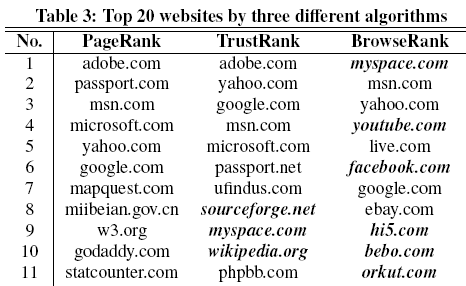The evolution of search engine algorithms

For search engines, the most important was always the issue of prioritizing sites in the issue. This question raises two problems:
1. How to determine the site that meets the request most accurately (relevance).
2. If users do not find the search engine through a search engine, users will prefer to use another search engine.
')
The ranking algorithm is also of great importance for a proper assessment of online assets, the absence of which at one time was among the factors that gave rise to the formation of the dot-com bubble, while in reality, Internet resources may indeed be an ordinary resource to be bought and sold. Finally, without an understanding of the “weight of the site,” the online advertising industry could not develop. In these cases, the evaluation mechanism is involved and we are faced with the need to determine reliable criteria for such an assessment of the parameters of success, relevance and quality of the site in comparison with other resources.
Thus, the question of assigning a site to certain parameters based on the data collected is a primary task for both search engines and digital workers.
Existing accounting methods
The task of ranking and evaluating Internet resources can be solved and solved mathematically and relates to the field of the council and the processing of large volumes of statistical data. It can be:
- PR (Stanford University and Google)
- Browserank (Microsoft)
- DA (Moz)
- TrustRank (Stanford University and Yahoo!)
- CY (Yandex)
- DwellRank (Blippex)
Reference Mass Ranking
Google’s ranking algorithm, named after Larry Page, one of the company's founders, was one of the first and, in fact, led to the creation of a giant company due to its exhaustive relevance at the time of its creation in 1996.
This mechanism, as well as similar to it, will operate with such concepts as "reference mass" or "reference graph". In its most simplified form, it will sound like this: the more other resources refer to a resource, the more significant this resource is. Accordingly, it is ranked higher. A further complication of the algorithm, aimed at its more fine-tuning, is designed to weed out links from spam resources by assigning a certain weight to the resource and, accordingly, “prices”, both literally and figuratively, to the links that will be located on it.
User behavior ranking
Search engines obviously do not refuse to rank by reference mass, despite all assurances, however, ranking algorithms are gradually becoming more complex and already factors based on the number and "price" of the links are used for ranking along with about two hundred others, in which factors based on user behavior in relation to sites and links between them.
Data sources
Data is collected through:
1. Browser add-ons (Alexa)
2. Metrics (Yandex.Metrica, Google Analytics)
3. Specialized browsers (Chrome, Yandex Browser)
This data is used in ranking, pricing the site, advertising materials posted on it, and relevant publications.
The desire of each search engine to create its own browser and submit it as a faster, more convenient, containing a lot of additional buns - this is just an attempt to attract users to your side in order to collect data. That is why many users switch to alternative search engines: for example, collecting nothing about the user - according to the creators - DuckDuckGo and others .
One of the first attempts to create a ranking algorithm based on data on user behavior, specifically, referrals, was BrowseRank, released in 2008 to SIGIR, which we already talked about in detail in our blog .
Differences in rankings for various algorithms are obvious:

A source
findings
When it comes to search algorithms, we are faced with the problem of non-disclosure: how it works reliably no one knows, except for the employees of search engines. Thus, the “experience of the son of difficult mistakes” was taken into account, when each new successful and useful ranking method turned out to be very quickly spammed by the methods of the so-called “black” advancement. Now they are trying to make their algorithm opaque for SEO specialists, so that it cannot be affected by “hacking”, “cheating” and in any other way except through “white factors”, such as creating the right site infrastructure, reasonable content and customer satisfaction. The somewhat "sagging" ranking factor by the presence of links is complemented by factors based on user behavior and link clicks, as much less influenced from outside and, as a result, supposedly more reliable.
More on the topic:
Analysis of user behavior and personalization of search results. Research Yandex.
BrowseRank - Review.
BrowseRank appearance history
BrowseRank presentation (original text in English)
Source: https://habr.com/ru/post/231531/
All Articles